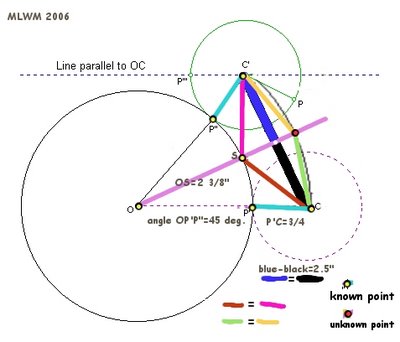For a really long time, I've been interested in the way we think. It is one of the most
brain somersaulting things a human being can focus on, the process with which they process information... imho

I don't have a whole lot of time for myself lately -- but I've been trying to be productive with my thought processes.
While driving back from the post office (tax time), I made this little
postulate about it.
 click to enlarge and read text
click to enlarge and read textwriting/speaking <--> conscious flow <--> philosophy/study of logic <--> experiment/diagram/actual logic/mathematics <--> drawing/sculpting/building <-->images/symbols/pattern recogition/making connections <--> subconscious flow
yes I'm getting into muddy waters here, but maybe I need to study the mud and the water atm to find the truth.

It seems like there is a point in that continuum (which is not absolute, and is my own mock-up) that is almost like an 'access point.' At some stage there, my brain stops working in symbols and images, and begins to make logic and words. Logic and words are the key to expressing oneself in the physical world (although drawings and sculptures could, they are not understood as absolutely, especially by the masses).
I need to exercise that region of my thought process until I can either expand or improve that access point. Maybe math is the way to do this -- or it will lead the way to it. Maybe a bit of A, B, and C are required.. art, math and philosophy(study), in order to attain this goal.
I'm sounding flaky even to myself here, but somewhere here is a kernel of truth that will help, somehow, to a better and greater understanding of what I really want to know. Know theyself, in order to know the world?
The results may yield the formula, as much as the formula yields the results. But what truly yields the truth, is something that the formula and the results hold in common.. the process -- the calculation, the transfiguration.
Book Links:
The Way We Think: Conceptual Blending and the Mind's Hidden Complexities book.. although I've read part of it and need to read some more.. especially after this.
I might have to look into getting this one afterwards.. if I can think straight after all of this ;o)
Mappings in Thought and Language --"This book examines a central component of meaning construction; the mappings that link mental spaces. A deep result of the research is the fact that the same principles operate at the highest levels of scientific, artistic, and literary thought as do the lower levels of elementary understanding and sentence meaning. Some key cognitive operations are analogical mappings, conceptual integration and blending, discourse management, induction, and recursion..." from card catalog desc at Amazon.
Online articles and archives
Cognitive questions archiveCool Blogs
Mixing Memory <--look at all the past archives!






